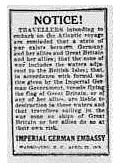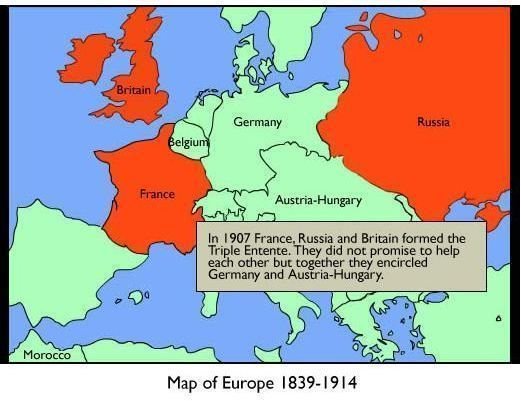A World War One Webquest that Explores Reasons For & Outcomes Of The Great War
The First World War is an important part of any World History curriculum. World War 1 began in 1914 and was known as the Great War until the Second World War. Since then it has been referred to as World War 1. It was a deadly war fueled by lethal weapons produced during the Industrial Revolution and wielded in the trenches of Europe. In the years preceding World War 1, national pride grew in Europe along with colonialism and the armed forces of many European nations. Therefore, the stage was set for conflict when Archduke Francis Ferdinand of Austria-Hungry was assassinated in Sarajevo by Gavrilo Princip, a man with connections to a Serbian terrorist group. Austria-Hungary declared war on Sarajevo and Germany soon joined in the fight against the Serbs. Learn about the causes and early days of the conflict with this World War 1 Webquest.
The WebQuest
Begin at the beginning and have your students find the answers to the following questions using the suggested sites below, and independent internet research.
-
Which countries comprised the Triple Entente prior to World War 1?
-
Which nations were in the Triple Alliance?
-
List five factors that contributed to the onset of the Great War, or World War 1?
-
What specific event served as the catalyst for the First World War?
-
What nations made up the group known as the Central Powers?
-
Which countries comprised the original members of the Allies?
-
What events caused the Allies to declare war on the Ottoman Empire?
-
When did the Allies declare war on the Ottoman Empire?
-
What was the Lusitania?
-
Describe what happened to it on May 7, 1915?
United States Involvement in World War I
-
Was the Lusitania the last unarmed vessel to be attacked by a German U-boat?

-
How were the U-boats used as interference with British supply routes?
-
Discuss the contents of the Zimmerman note and how it impacted the tide of the war?
-
When did the US enter World War 1?
-
In your opinion, did the US entry into the war shorten or prolong the conflict? Explain your answer.
The War’s End
- When did World War I end?
- Who were the “Big Four” at the Paris Peace Conference?
- Name the treaties that resulted from the Paris Peace Conference?
- What doctrines put forth in the treaties laid down the groundwork for WW II?
- How did the German people view the Treaty of Versailles?
- What organization did the Treaty of Versailles establish?
- Was the United States part of this organization? Why or Why not?
- Given its purpose, was it an effective organization?
- When was it dissolved?
More Questions
- Describe a U-boat.
- The House of Windsor came to be called such in 1917. Why was the Royal family’s name changed from Wettin to Windsor? Who instigated this change?
- What is meant by the term “Trench warfare”?
- By the end of the Great War, how many countries joined the Allies?
- When did the First World War stop being referred to as “The Great War”?
Suggested Websites for World War 1 Webquest
- https://www.firstworldwar.com
- https://www.pbs.org/greatwar/chapters/ch1_trench.html
- https://wwi.lib.byu.edu/index.php/The_Zimmerman_Note
- https://www.eyewitnesstohistory.com/w1frm.htm
Image Credits
https://www.nationalarchives.gov.uk/education/greatwar/g2/g2s2_bg.htm
This post is part of the series: World History in a Year (or 10 months) Part 3
A series of lesson plans for a world history curriculum. This series is a continuation of two other collections of world history lesson plans.
